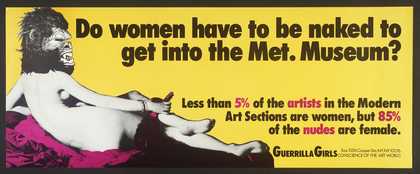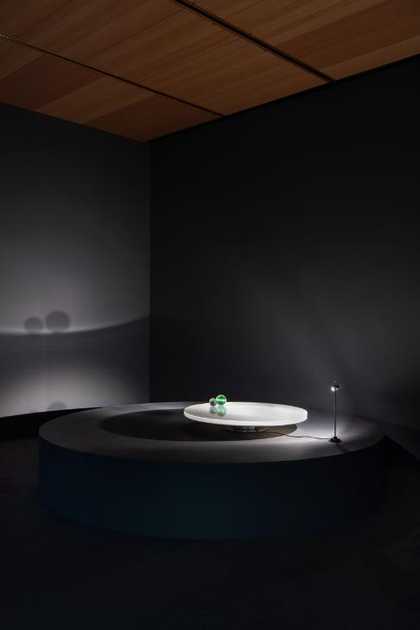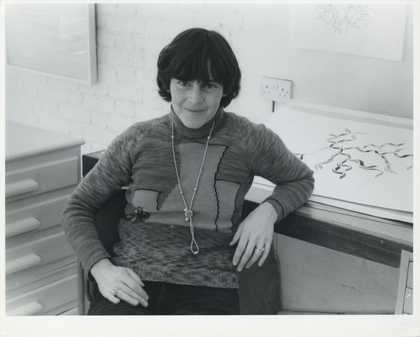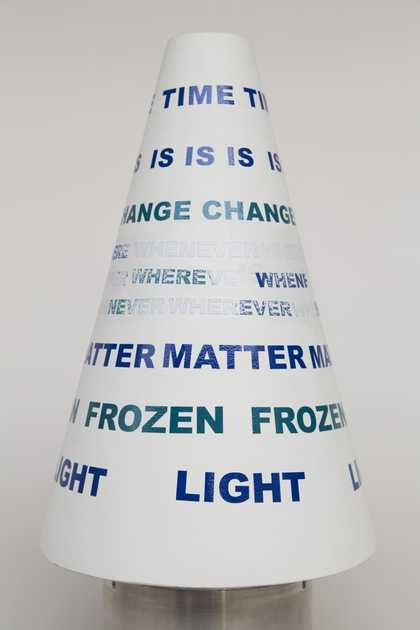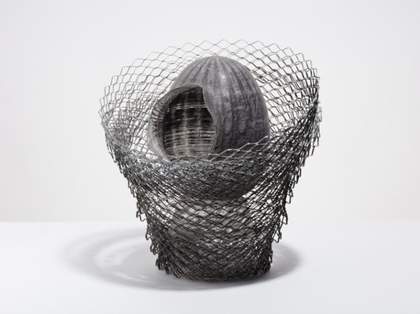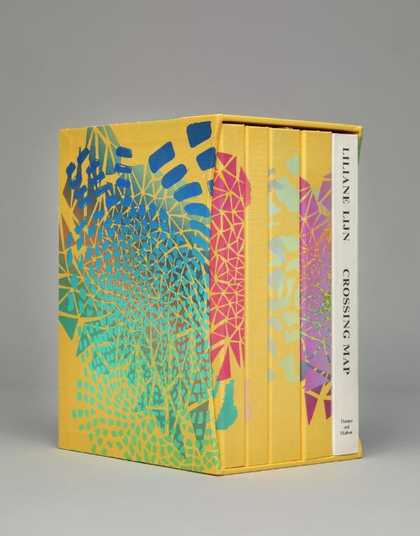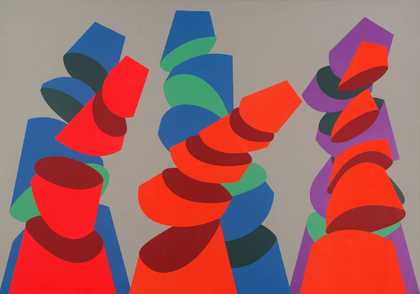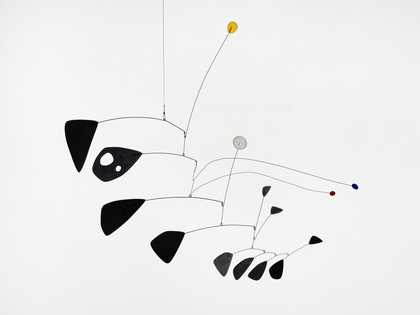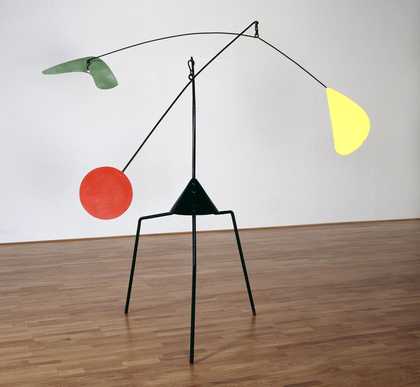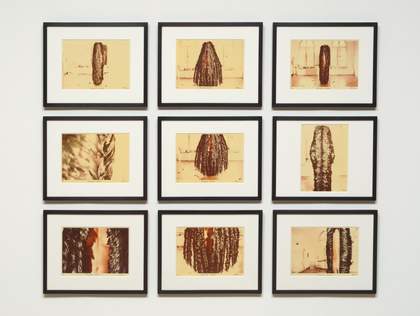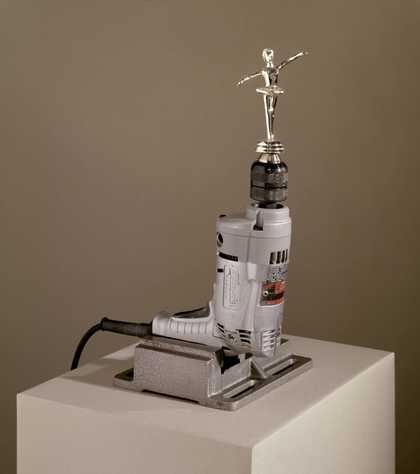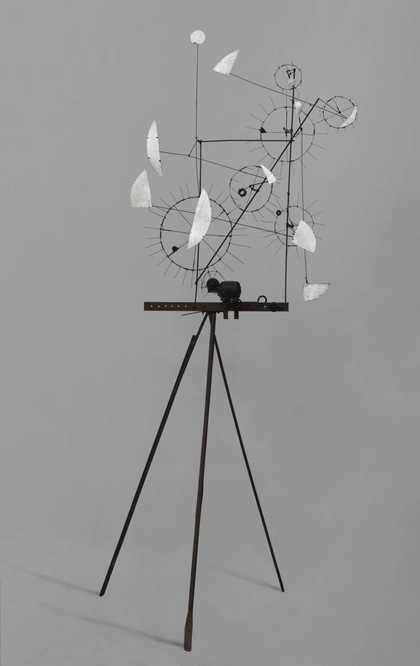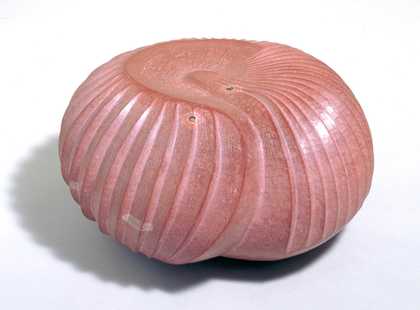Who is Liliane Lijn?
I try to make work that will allow people to still their mind and look at things with a different eye.
Liliane Lijn
Artist Liliane Lijn is best known for her kinetic artworks. (Kinetic art is art that moves.)
In the early 1960s Liliane Lijn was at the forefront of exploring new ways of using technology and materials to make art.
Surrealism, Greek mythology, female identity and developments in technology are just some of the things that have inspired the artist.
Early Inspirations
Liliane Lijn was born in New York in 1939.
Her family were European Jews who had settled in America at the outbreak of World War II. Her family included writers and artists who she describes as ‘simply interesting people’.
After spending her teenage years in Switzerland she moved to Paris in 1958 with the aim of being an artist. Lijn remembers her first year in Paris as ‘a sustained burst of unfocussed energy’.
She studied archaeology and art history, attended gatherings at the Surrealist Café, visited museums, explored the city, and began to experiment with collage and ink drawings.

Liliane Lijn (second from left) with Takis (far left) and friends in Paris, 1961 © Costas C. Chryssostalis
Everyone I met taught me something, suggesting reading material, showing me their own work, telling me what to look at, giving me tips on technique and looking critically at my first attempts to draw and paint.
Liliane Lijn
Poetry and surrealism
In 1963 Liliane Lijn had her first exhibition at La Librairie Anglaise in Paris, where she showed kinetic artworks called Poem Machines.
In these works, cylinders with printed words spin at high speed until they blur and vibrate. Lijn felt that words had lost their power and wanted to do something about this.
When I made Poem Machines my intention was to explode both prose and poetry, remembering their origin in vibration.
Liliane Lijn
To Lijn, poetry is a form of visual expression: 'I wanted people to see sound'.
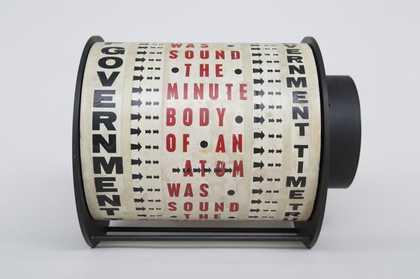
Liliane Lijn, Get Rid of Government Time 1962 © Liliane Lijn
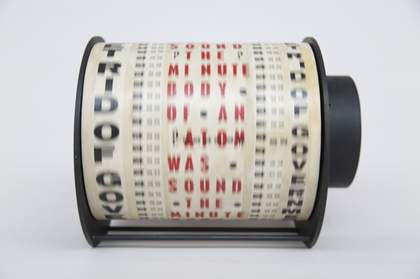
Liliane Lijn, Get Rid of Government Time 1962 © Liliane Lijn
Lijn's idea of using machines to create poetry came from the surrealist idea of automatic writing.
Surrealist artists and writers were interested in creating visual representations of ideas or thoughts and often tapped into dreams and the subconscious. Automatic writing is produced by letting subconscious thoughts guide what you write.
Lijn met André Breton, one of the founders of the surrealist movement and inventors of automatic poetry, in Paris.
Feminism and Representations of the Feminine
Being a woman installs you so totally in your body that you could do two things: You could say ‘yes I am body and I’m proud of it’ or you could say ‘I’m mind! Forget the body.
Liliane Lijn
Liliane Lijn’s time in Paris also led to an interest in feminism.
When she arrived in Paris she found that there were very few visible women artists. She describes an atmosphere where women were not taken seriously or considered professional as artists.
In reaction to this, Lijn began to explore ways of representing the feminine in art.
Throughout her career, Lijn has made cone-shaped artworks called Koans which she sees as a female symbol. (Kōan is a Japanese word linked to Zen Buddhism and meditation).
As the cones spin, thin sections made from transparent material appear to rise and fall as curved lines, losing their form.
When the koans oscillate, the more you look at them the less you see the body. And that’s what interested me because I was very interested in dematerialization – in the idea of losing the body. And that was related in a way to being a woman.
Liliane Lijn
In the 1970s Lijn started making art whose forms echoed the female body.
Bridal Wound 1986–90 is a small sculpture in which black feathers encircle a glass sphere with a hole bursting through the front.
My idea was that it was torn, that my head was torn apart but also – it was like a wound – and also it was like hair. It was wound, hair, vulva.
Liliane Lijn

